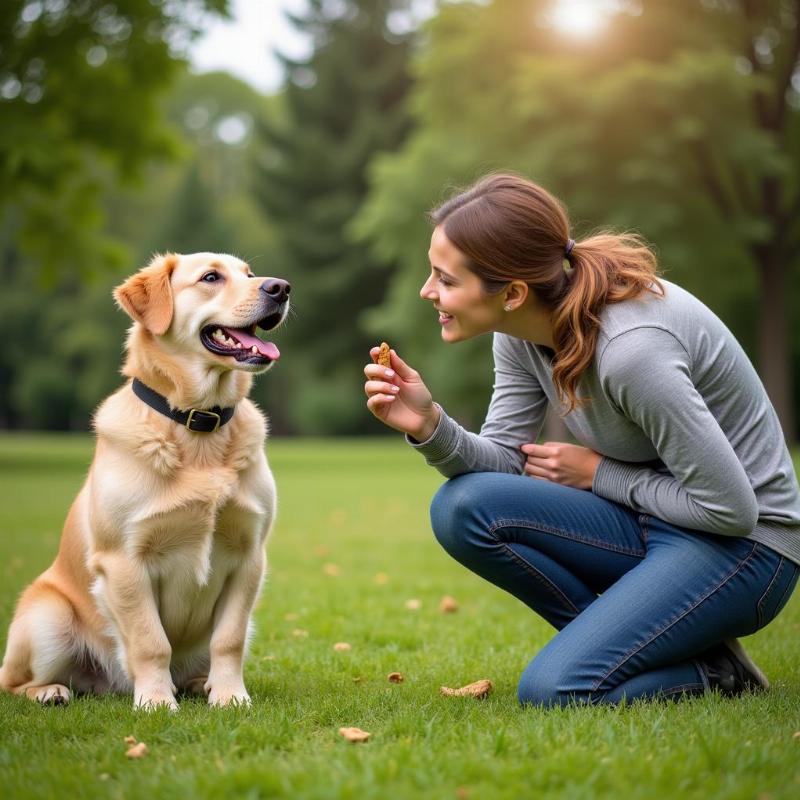Dealing with a dog that refuses to pee away from home can be frustrating and concerning. This common issue can stem from a variety of reasons, ranging from medical conditions to behavioral anxieties. Understanding the root cause is the first step towards helping your furry friend feel comfortable relieving themselves outside of their familiar territory. Let’s explore the potential reasons behind this behavior and discover effective solutions to help your dog feel more confident and comfortable peeing on walks and during travels.
Why Your Dog Refuses to Pee Away From Home
Several factors can contribute to a dog’s reluctance to urinate outside their home. Medical reasons, such as urinary tract infections, bladder stones, or other health problems, can make urination painful and discourage your dog from peeing anywhere. Behavioral factors are often at play as well. Your dog might be experiencing anxiety related to new environments, unfamiliar smells, loud noises, or even the presence of other dogs. Puppies still learning bladder control may simply not be ready to pee on cue or in unfamiliar places. Additionally, if your dog has primarily been trained to use pee pads indoors, they might associate elimination with the home environment.
Medical Concerns: Ruling Out Health Issues
Before addressing behavioral reasons, it’s crucial to rule out any underlying medical conditions. If your dog exhibits other symptoms like straining to urinate, frequent urination, blood in the urine, or excessive licking of the genital area, consult a veterinarian immediately. A thorough examination can determine if a medical condition is contributing to the problem. In the United States, readily available veterinary care makes it easy to access professional guidance for your dog’s health concerns.
Behavioral Reasons and Solutions
Once medical issues are ruled out, focusing on behavioral solutions is key. Creating a positive and relaxed environment during walks is essential. Choose quiet, familiar routes initially, gradually introducing new locations. Keep the leash loose to avoid adding stress. Positive reinforcement is highly effective. Reward your dog with praise, treats, or a favorite toy immediately after they eliminate outdoors.
 Positive Reinforcement Dog Training
Positive Reinforcement Dog Training
Anxiety and Fear: Addressing Underlying Emotions
If anxiety is the culprit, consider using calming aids like pheromone sprays or diffusers. These products mimic natural dog appeasing pheromones, creating a sense of security. Consult with your veterinarian or a certified dog trainer for guidance on desensitization and counter-conditioning techniques. These methods involve gradually exposing your dog to the feared stimuli while rewarding calm behavior.
House-Trained to Pee Pads: Transitioning Outdoors
If your dog is accustomed to using pee pads, gradually transition them outdoors. Begin by placing the pee pad closer to the door, then outside on the porch, and eventually in the yard. The scent of their urine on the pad will encourage them to eliminate in that spot. Consistency is key throughout this process.
Building Confidence: Encouraging Outdoor Elimination
Establish a consistent potty break schedule, taking your dog out at the same times each day. This helps regulate their bodily functions and creates predictability. Offer plenty of opportunities for outdoor exploration and play. Physical activity can stimulate the urge to urinate. Avoid punishing your dog for not peeing outdoors. This can worsen their anxiety and make the problem more challenging to address.
When to Seek Professional Help
If your dog continues to struggle with outdoor elimination despite your efforts, consulting a certified professional dog trainer or veterinary behaviorist is advisable. They can provide personalized guidance and develop a tailored training plan to address your dog’s specific needs. Remember, patience and consistency are crucial in helping your dog overcome this challenge.
Conclusion
Addressing a dog that won’t pee away from home requires a multi-faceted approach, considering both medical and behavioral factors. By ruling out health issues, creating a positive environment, and implementing consistent training techniques, you can help your dog overcome this hurdle and enjoy stress-free potty breaks wherever they go. Don’t hesitate to seek professional help if needed. With the right approach and support, your dog can learn to comfortably eliminate outdoors and experience a more fulfilling life.
FAQ
-
Why does my dog only pee at home? This could be due to medical reasons, anxiety related to new environments, or a learned association between elimination and the home environment.
-
How can I get my dog to pee outside when traveling? Bring a familiar blanket or toy, establish a routine, and offer frequent potty breaks in quiet areas.
-
Is it normal for a puppy to not pee away from home? Yes, puppies are still learning bladder control and may take time to adjust to new environments.
-
What are signs of a urinary tract infection in dogs? Straining to urinate, frequent urination, blood in the urine, and excessive licking of the genital area.
-
How can I make my dog feel more comfortable peeing in new places? Choose quiet routes, use positive reinforcement, and consider calming aids like pheromone sprays.
-
When should I contact a veterinarian about my dog’s peeing habits? If your dog exhibits any signs of pain or discomfort during urination, or if behavioral interventions are unsuccessful.
-
Can a dog trainer help with this issue? Yes, a certified professional dog trainer or veterinary behaviorist can provide personalized guidance and develop a tailored training plan.
Beautdogs.us is your premier online destination for comprehensive dog care information, breed-specific advice, and a curated selection of products to enhance your dog’s life. Whether you’re a first-time dog owner or a seasoned expert, Beautdogs.us offers expert advice, helpful resources, and a supportive community to guide you every step of the way. Contact us today for personalized support! Email: [email protected], Phone: +1 501-555-7529. Visit Beautdogs.us for more information.